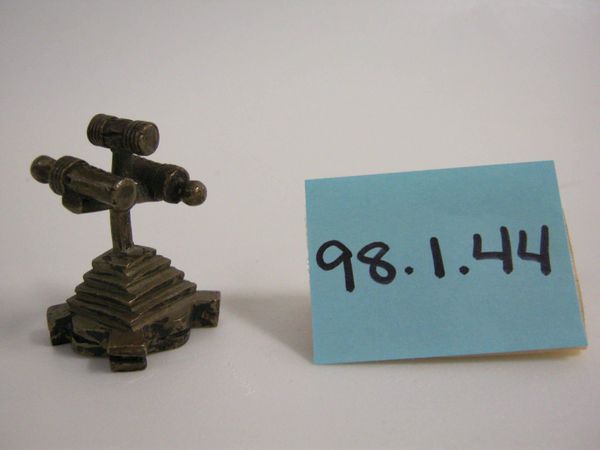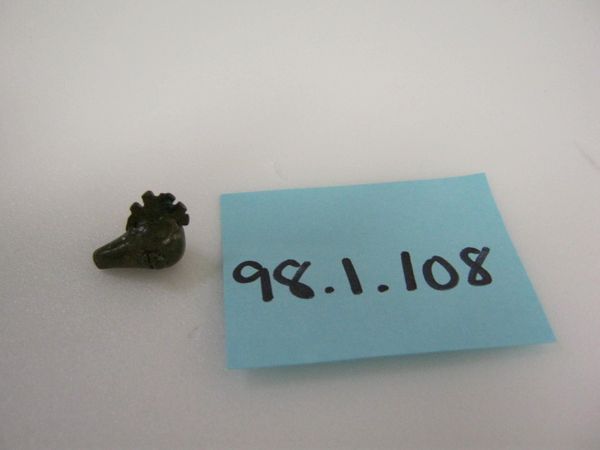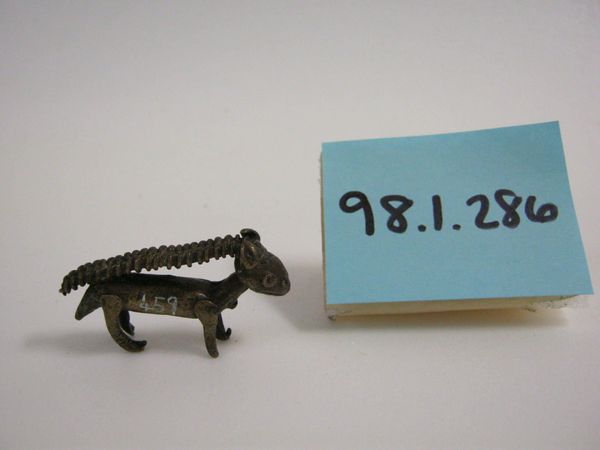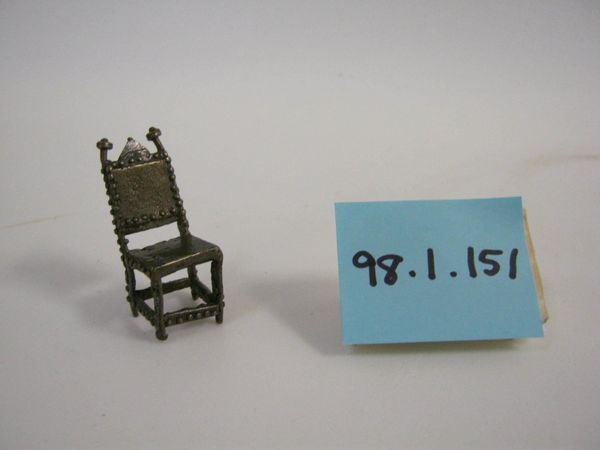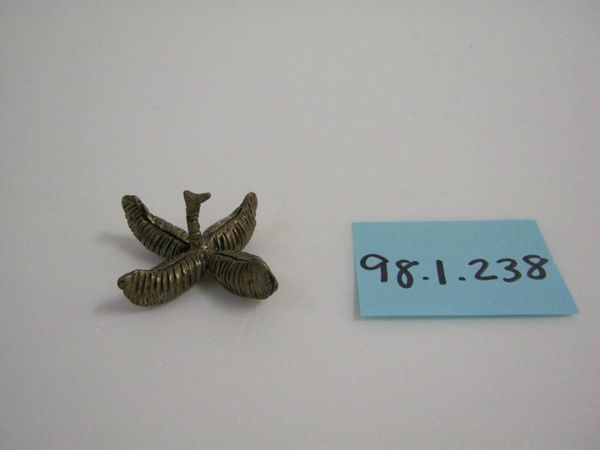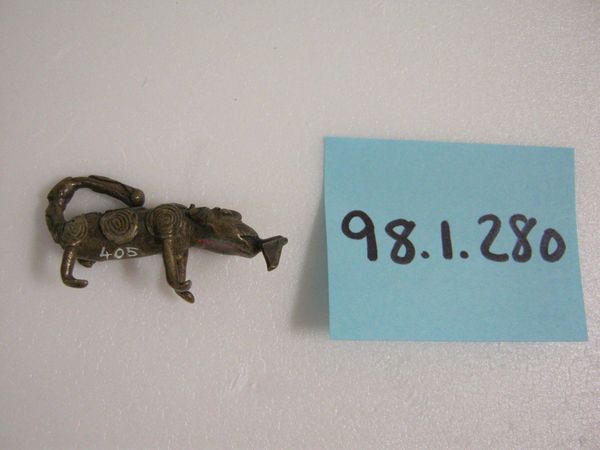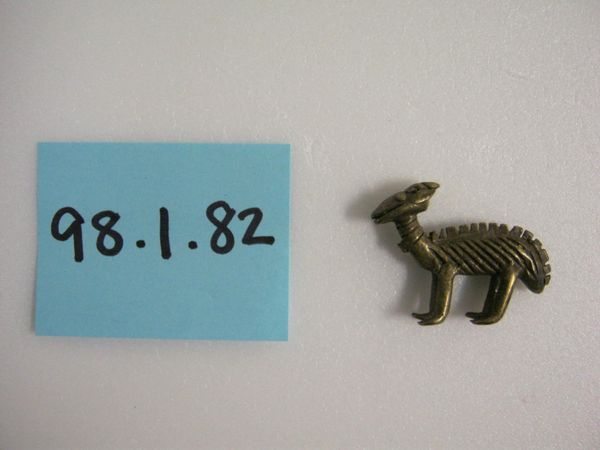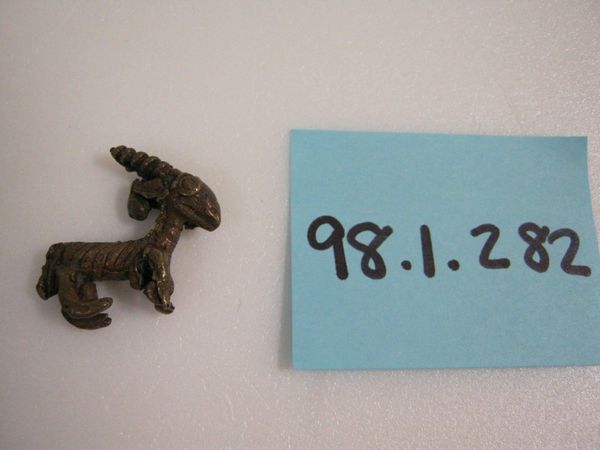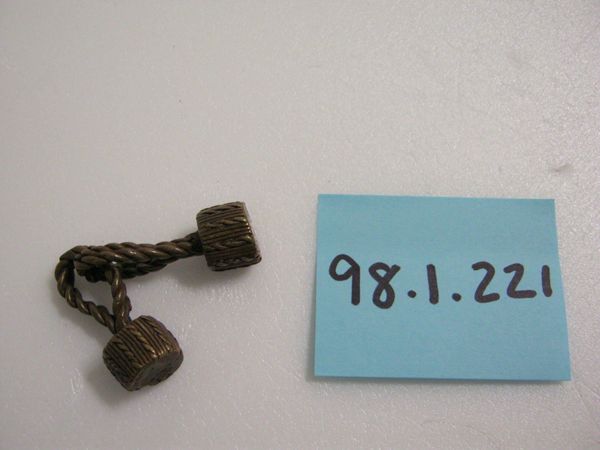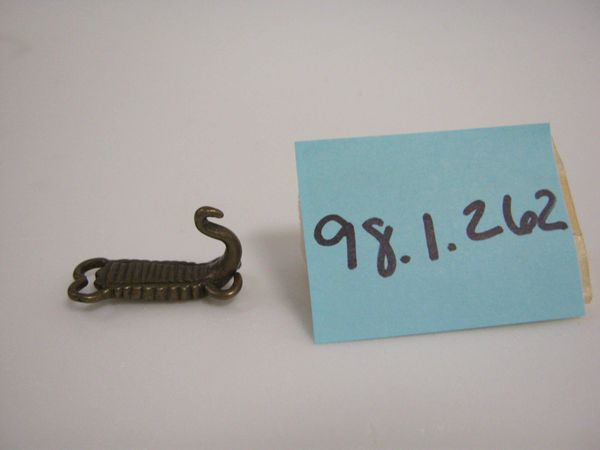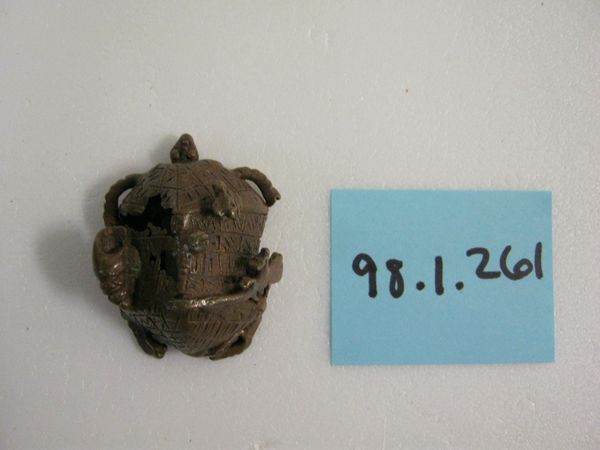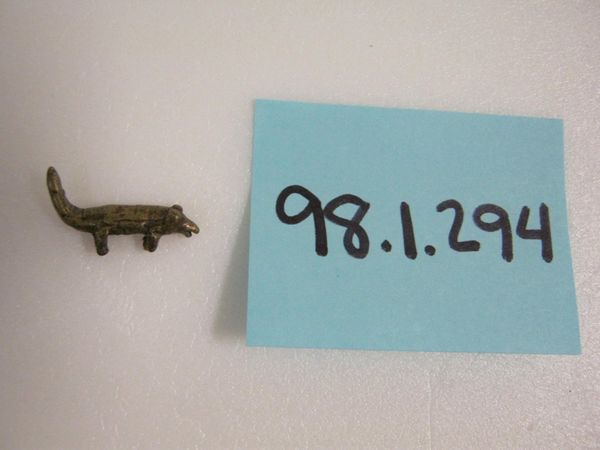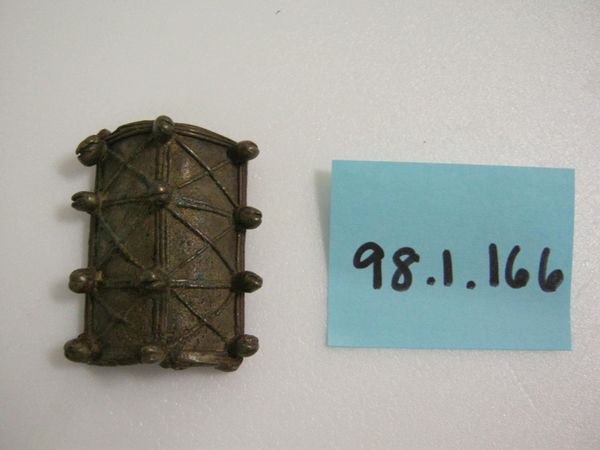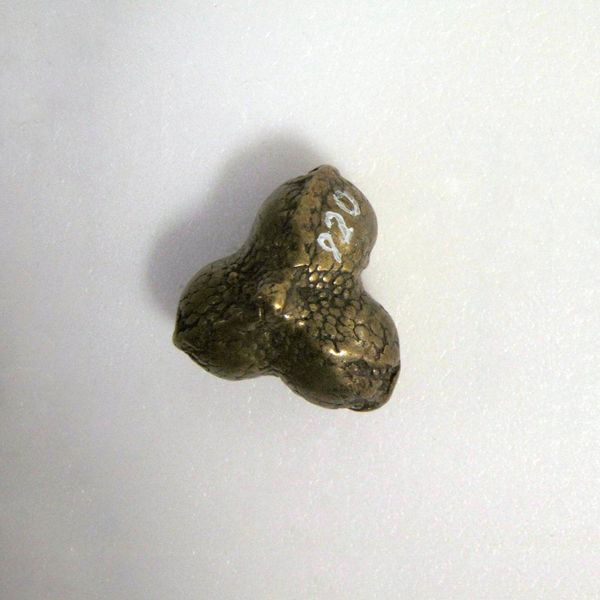![Goldweight [Mankala Board] by Akan](/_next/image?url=https%3A%2F%2Fd2w8kbdekdi1gv.cloudfront.net%2FeyJidWNrZXQiOiAiYXJ0ZXJhLWltYWdlcy1idWNrZXQiLCAia2V5IjogImFydHdvcmtzLzk1NTcyZTc0LTg5ZjMtNDcyMy1hOTE4LTBmYTc0NTYwZTgxZC85NTU3MmU3NC04OWYzLTQ3MjMtYTkxOC0wZmE3NDU2MGU4MWRfZnVsbC5qcGciLCAiZWRpdHMiOiB7InJlc2l6ZSI6IHsid2lkdGgiOiAxOTIwLCAiaGVpZ2h0IjogMTkyMCwgImZpdCI6ICJpbnNpZGUifX19&w=3840&q=75)
brass, sculpture
brass
sculpture
Dimensions: 7/8 x 2 9/16 x 3/4 in. (2.22 x 6.51 x 1.91 cm)
Copyright: Public Domain
Curator: Looking at this intriguing brass sculpture identified as a Goldweight Mankala Board crafted by the Akan people during the 19th or 20th century, I'm immediately struck by its symmetrical, almost architectural quality. The arrangement of repeating cylindrical forms establishes a powerful sense of balance and visual rhythm. Editor: Indeed. There's a somber tone suggested here through its earthy, burnished material presence, the patina hinting at countless transactions and shared histories within the Mankala game and culture. Curator: Notice the deliberate structuring: two parallel rows of cup-like forms—likely containers for game pieces—connected by perpendicular struts to a stable base. Its tactile nature, indicative of constant handling, is visually compelling. It invites a very analytical consideration of the artist's problem solving. How best to arrange for efficient use? How to distribute weight? Editor: Well, to expand upon that functional assessment, this piece also operates as an icon, signifying trade, negotiation, and the accumulation of wealth within the Akan community. It also is used as a device for recording important community memory, as stories of transaction can be transferred intergenerationally. Curator: Semiotically, we can dissect the relationship between these forms and infer their deeper significance through contextual analysis. I notice how the consistent module repeats to create a sort of unified code, which begs to be decoded to reveal its underlying message or utility. Editor: For the Akan, forms and cultural meanings can never be entirely separate. This goldweight board points to an intricate societal understanding about capital and memory, a connection many tend to omit in Western economics and art. This is the genius of cultural objects to symbolize how we are with each other. Curator: This compact Akan brass work showcases how practical considerations merge artfully to produce forms replete with historical, commercial, and, above all, sculptural density. I will ponder the balance in material use after our visit. Editor: Indeed. This "Goldweight Mankala Board" isn’t only about its brass, it is as well a symbol etched into history—reminding us of the Akan society and how wealth translates across visual forms. Thank you for these perspectives!
Comments
No comments
Be the first to comment and join the conversation on the ultimate creative platform.
